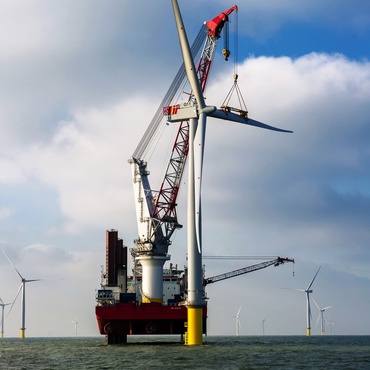World's largest offshore wind farm slots in final turbine
 Developers of the world’s largest offshore wind farm, the £2bn London Array, have confirmed they are on track to reach full power next spring, after installing all 175 turbines at the 630MW project.
Developers of the world’s largest offshore wind farm, the £2bn London Array, have confirmed they are on track to reach full power next spring, after installing all 175 turbines at the 630MW project.Located in the Thames estuary, the London Array is a joint venture between Dong Energy, E.ON, and Masdar.
The consortium yesterday said all the turbines are installed, 55 of which are supplying power to the grid. The remaining 120 will be connected over the coming months.
“The London Array will soon be the largest operational offshore wind farm in the world,” said Benj Sykes, head of Dong Energy’s UK wind division. “Building offshore wind farms of this size and larger in the future allows us to harvest the advantages of scale and is an important element of our strategy to drive down the cost of energy.”
In October, the consortium sumbitted plans to build a second 240MW phase of the London Array, which would take the total capacity to 870MW, enough to supply 650,000 UK homes with electricity.
In related news, the Crown Estate has signed a deal with National Rail to allow cables from offshore wind farms to cross train tracks as they come in from the shore.
The memorandum of understanding agreed between two of the UK’s largest landowners will be crucial to achieving plans to install up to 32GW of offshore wind capacity in UK waters.
As developer of Round 3 projects start construction, an increasing number of cables will have to run across rail tracks to connect to the grid. The companies said they would now work together to clarify how rights would be granted for cable crossings for offshore energy projects to cross Network Rail land.
David Biggs, Network Rail director of property, said: “By granting rights for cables to cross our land it demonstrates our support towards the development of offshore wind farms which will contribute towards the UK’s ambitious targets for developing renewable energy.”
You can return to the main Market News page, or press the Back button on your browser.

